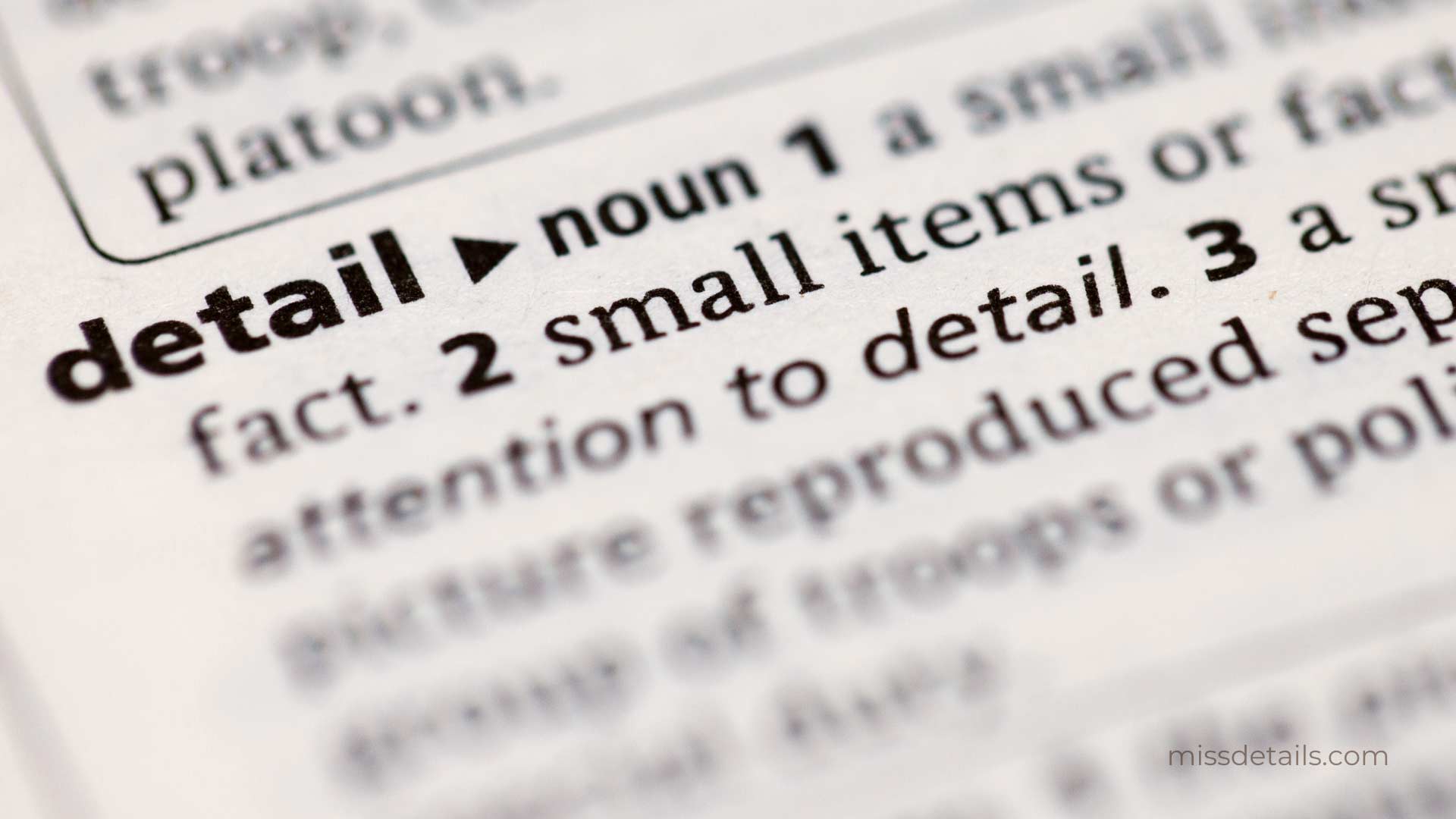If there’s one place where details matter, it’s a wedding.
I’m willing to bet that the best weddings you’ve attended are the ones that featured amazing details. Whether it’s a subversion of expectations, such as serving a charcuterie tower instead of a cake; a unique version of a necessary item, such as using handmade bookmarks as escort cards; or a flawlessly executed theme, with lighting, decorations, and menus all in alignment—these are the weddings you and your friends talk about for years.
How do I know this? Because before I founded Miss Details, I designed invitations and experiences for weddings and other events. In fact, it’s how I got my brand name. I was so hyper-focused on designing all the details necessary to bring my clients’ event concepts to life that when I’d walk into a room, I’d hear someone say, “Here comes Miss Details!”
I don’t work on weddings anymore, but I employ the same detail-oriented philosophy in designing memorable brands for my clients. I believe that identifying the little things that set brands apart, and then amplifying them through careful design, is what elevates that brand’s client experience from good to great, and from great to exceptional.
This philosophy is so central to my work that I list “Details Matter” among my core values. I invite you to explore with me why, in the midst of a world that tells you not to sweat the small stuff, I make the small stuff my priority.

Three Reasons Why Details Matter

Memory
I have a friend who told me about a brunch restaurant she once visited. It was a standard fast casual-full service hybrid setup: guests ordered their food at a counter, then sat down at a table marked by a number given to them by the cashier, where a waiter would bring out their food. However, instead of a standard table number, the cashier gave my friend a card that read “Labrador,” with an accompanying drawing of a Labrador retriever.
Looking around, she noticed the other tables of waiting patrons were marked with similar cards, each featuring a different dog breed. So, instead of bringing out food to Table 5, the restaurant’s wait staff were instructed to bring the food to the Dalmation table. My dog-loving friend was delighted, and even though it’s been several years since she’s visited the restaurant, she still remembers it as “the brunch place with the dog cards.”
This is just one example of how a single detail can make your audience remember your brand, even against cutthroat competition. Although this restaurant featured delicious food and a cozy ambience, it probably would have been lost in my friend’s mind among the dozens of cute brunch spots in her city had it not been for that seemingly small detail of marking their tables with dogs instead of numbers.
If you can craft your own details to help your audience make a memory, they’ll be more likely to keep your brand top of mind, and to give you their business in the future.

Inimitability
For entrepreneurs who have worked hard to set their businesses apart from the competition, imitation isn’t flattering—it’s infuriating, and in extreme cases, can spell the death of their brand. One way to insure your brand against such a fate is to infuse it with careful details that are difficult, if not impossible, to replicate.
This strategy has long been employed by high-end brands plagued by knockoffs. Designer bags come with a veritable checklist of signature touches that serve not only as legal protection, but also to help customers distinguish copycats from the real thing. For instance, Coach’s signature monogram print is often imitated, but the genuine artifact is recognized by perfectly symmetrical pairs of C’s that face one another. Meanwhile, Coach’s full logo—a stagecoach drawn by two horses, driven by a man holding a whip—is so minutely detailed that any slight deviation immediately marks a bag as fake.
This is why, when creating logos and other branded materials for my clients, I aim to craft designs that not only effectively and succinctly communicate their brands, but that are so detailed and unique as to be inimitable by the competition.

Commitment
A primary reason for my focus on details is that it demonstrates a high level of care and commitment to my clients. When I work on a brand design, I take meticulous inventory of the client’s business goals alongside their personal history and interests. I then distill these details into a cohesive design that communicates not only what the brand does, but who it is.
A few years ago I met Russ Burnham of Front Line Mobile Health, which offers comprehensive medical care to public safety professionals. At the time, the brand served firefighters, but wanted to expand their reach to police officers. Russ asked for my assistance in a brand redesign to communicate this change—specifically, he wanted to “lighten up” the brand’s dark, fire-specific aesthetic.
After digging deeper into Russ’s story, I learned that Front Line is a veteran-owned company, and that many of Russ’s friends and employees attended West Point. My team took inspiration for the redesign from the military academy’s gunpowder palette, which was neutral enough to serve a wider audience, but still had meaningful ties to the brand’s history.
Front Line loved the new design, and Russ was grateful that I had taken the time to understand his brand’s background so I could bring it to life through detailed design. My team strives to build trust and forge lasting relationships with all our clients by homing in on the details that make a brand who it is.

Details Make the Design
As much as I love focusing on the details, I know it’s possible to get bogged down in them—to not be able to see the forest for the trees. When striking a balance between the details and the big picture, I look to this quote from designer Charles Eames:
“The details are not the details. They make the design.”
One brand that beautifully illustrates this principle? Olive Garden. Though ostensibly a pasta restaurant, the Italian chain is best known for the endless breadsticks and salad that come free of charge with the purchase of an entree. And while complimentary bread is hardly a radical notion in the restaurant industry, Olive Garden’s attention to detail takes it to another level. The garlic seasoning, the warm breadsticks peeking out of a white napkin laid in a basket, the family-style salad bowls … these details all combine so powerfully that most Olive Garden patrons consider the entrees secondary to the breadsticks and salad. In this way, Olive Garden has made the details the basis for their entire brand—a brand which, love it or hate it, has expanded to nearly 900 locations.
Another restaurant that’s learned the power of details in branding is one I’ve worked with closely: Ling & Louie’s Asian Bar and Grill, owned by restaurateur John Banquil. My team designed business cards for the restaurant, which its servers hand out to diners at their tables when they first introduce themselves. This serves not only to provide patrons with a physical reminder of the restaurant’s brand, but to infuse a personal touch into their dining experience. (Not to mention, we specifically designed these cards in black and white to save on printing costs—because John and I both understand that those small details can add up over time!)
The bottom line is that focusing on the details doesn’t mean abandoning the bigger picture. The power is never in one specific detail—it’s in the combined force of all the details working together to create a cohesive and memorable design. This is one of the foundational principles of my work, and one I’m proud to represent through the name given to me back in my event design days.
If you’re struggling to sift through the details in your own brand, my team and I are here to help. Book a complimentary call with me today to discuss how we can identify and amplify the details that make your brand stand out.

Don’t want to miss out on our articles and insights?
Sign up for the Miss Details newsletter today.



